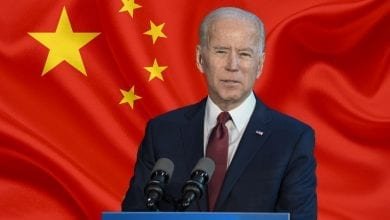Inflation Rises to 3.4%,Likely to Go Higher
With wages rising, energy prices escalating and shelter costs increasing, higher inflation lies ahead.
The Bureau of Labor Statistics just released the inflation data for December 2023. The Consumer Price Index increased by 0.3% in December, raising the annual inflation rate to 3.4%. That’s up from the 3.1% annual inflation rate last month. It appears that this uptick may indicate more inflation is ahead.
__________
Large wage increases won by organized labor, along with other major employers bowing to wage hikes, are likely to make inflation spike again in 2024,
__________
While aggressive interest rate increases in the last half of 2022 did serve to reduce the annual CPI from the peak of 9.1% to the current 3.4%, reaching the Federal Reserve’s target goal of 2% will be very difficult. In fact, based on the large wage increases received by organized labor and the resulting large wage increase received by almost all workers, inflation is likely to increase in 2024.
That view is contrary to most economists. The consensus is that inflation will continue to fall in 2024 and will reach the Fed’s 2% target by 2025. That view says that in 2024 and 2025, the Fed will be more concerned with the slowing economy. Fourth quarter GDP growth figures are due to be released in about two weeks.
While the economy grew at about a 3% rate for the first nine months in 2023, the fourth quarter growth number will be much less. Most economists are forecasting about 1.5% gross domestic product (GDP) growth in the fourth quarter. The first quarter of 2024 may see even slower growth.
As such, most economists forecast that the Fed will begin to cut interest rates, perhaps as early as March. Then the Fed will cut interest rates one or two more times before the end of 2024.
I disagree.
A closer look at the Bureau of Labor Statistics news release shows that inflationary pressures are building. In December, half of the increase in the CPI was due to the increase in shelter costs. Shelter costs are likely to increase in 2024 simply because of the lack of building activity in 2022 due mostly to the high interest rates. That means a low supply.
If the Fed does cut interest rates, that will increase the demand for housing. Low supply and high demand always lead to higher prices.
Food costs, which have increased by 30% since the Biden administration took office in January 2021, did fall during the last half of 2023. Food prices are always volatile but after the huge increase in 2021, the prices have only fallen slightly. In December food prices rose by 0.2%.
Energy prices, which have fallen dramatically since the peak in June 2022, are still 30% higher than in January 2021. Energy prices rose 0.4% in December, and those prices may rise further if the war in the Middle East escalates.
Already some Middle East oil shippers are avoiding the Red Sea and Suez Canal. That means they must travel around South Africa. This adds to the cost and will result in higher energy prices. If oil supplies are curtailed because the war escalates, energy prices will move higher.
Even if there is no change in food and/or energy prices, inflation will remain above the Fed’s target. Currently this inflation rate, called the core rate, is still about 4%. In the last two years, the core rate has been in the 4% to 6% range.
That all means if wage increases continue to keep the core rate at 4% and if energy and food prices start to rise, we could see the CPI well above 4%. That means the Fed will not cut interest rates in 2024 and, indeed, may increase them.
Interest rates are probably not high enough to take enough excess demand out of the economy to reduce inflation. That statement is supported by noting that consumer credit card debt is now over $1 trillion. In December, consumers took out another $24 billion in credit after taking only $5 billion in November.
We all want the inflation rate to fall to the levels seen in 2020 when the CPI was 1.5%. While monetary policy is attempting to reduce excess demand to bring inflation down, the Biden administration’s fiscal policy continues to increase excess demand by deficit spending another $2.2 trillion in fiscal 2024. This will lead to more inflation.
Let’s hope the inflation rate can be reduced soon without a lot of recessionary pain. The Fed says they are engineering a soft landing. We will just have to wait to see what happens.
Agree/Disagree with the author(s)? Let them know in the comments below and be heard by 10’s of thousands of CDN readers each day!



